Family: Ericaceae Juss.
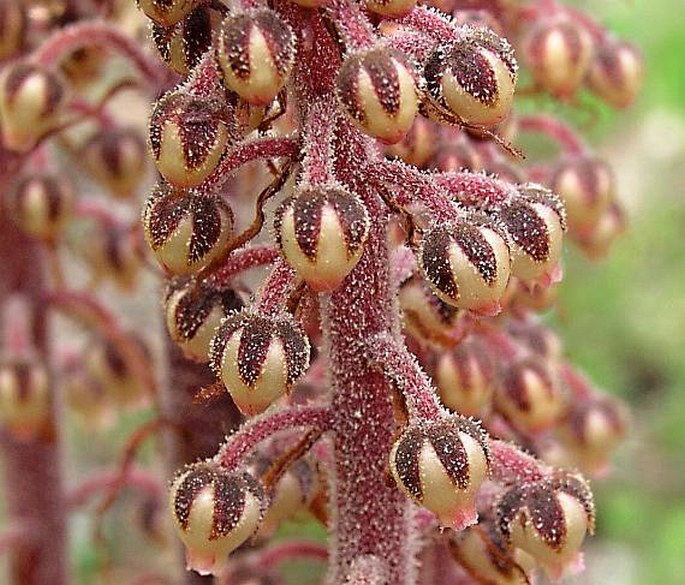
Distribution: North American species with wide area of distribution occurring in all Canada with exception of province of Manitoba and arctic territories. In US it is found both in west and east. In the west as far south as California and northern Mexico. Absent in central states and south of Pennsylvania.
Ecology: Moist coniferous and mixed forests, in humus soils, also in drier packed soils, from foothills to submontane. Blooms in July and August.
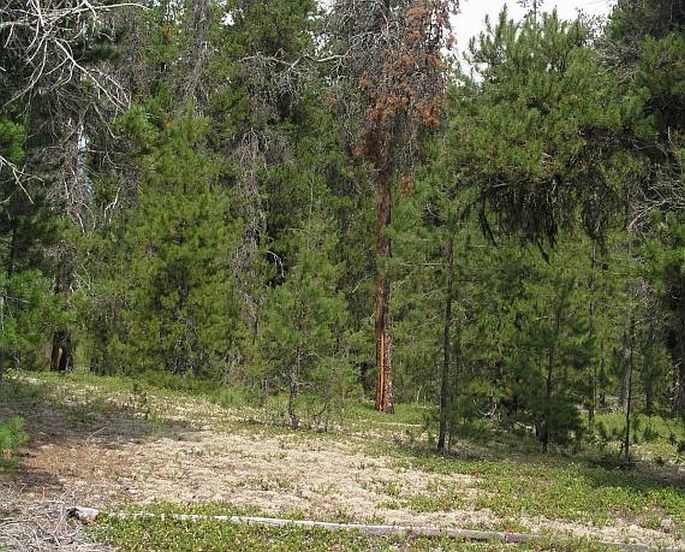
Description: Saprophytic, perennial, mycorrhizal herb, lacking chlorophyll, stems 30–100(–170) cm tall, reddish brown, covered with sticky hairs, from fleshy rhizome. Leaves scale-like, 1–3.5 cm long, yellowish, crowded near the base of the stem. Inflorescence is a raceme 10–30 cm long, many-flowered, bracts longer than pedicels. Flowers creamy white, nodding, urn-shaped, 6–8 mm long, nodding, pentamerous, sepals hairy, petals reflexed, 10 pistils, 1 style, 5 lobed. Fruit is a capsule, yellowish pink to rusty brown, thin 5 segmented, 5–10 mm, persistent to next season; seeds 0.5 mm.
Threat and protection: This species is classified as endangered species in the US state of Michigan, New York, Vermont and Wisconsin.
Use: Native tribes used a cold infusion of the stems and fruits to treat lung disorders.
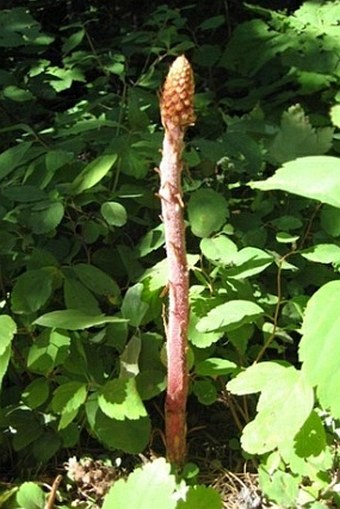
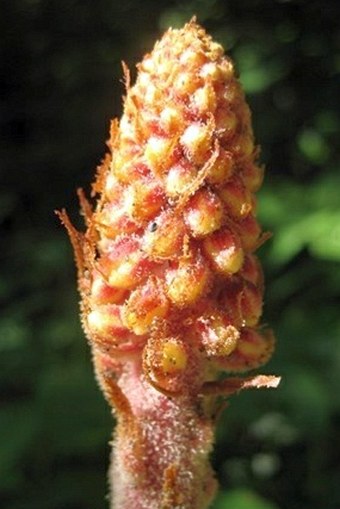
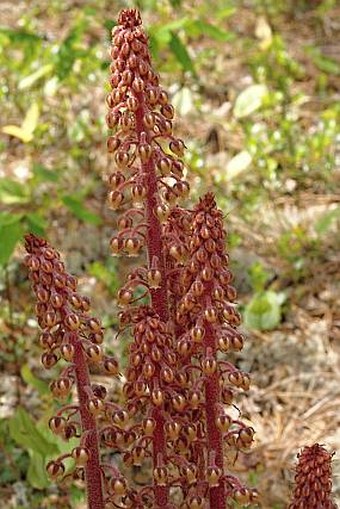
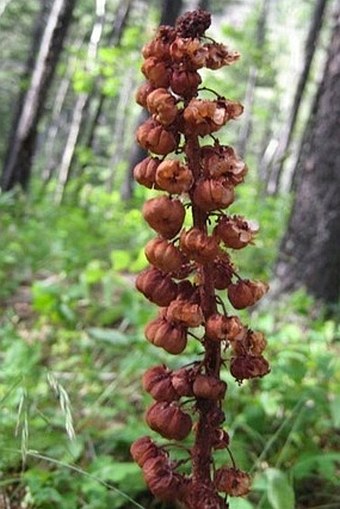

These images were taken in Canada, British Columbia, Valemount, Jackman Flats Provincial Park (by Alena Vydrová and Vít Grulich, July 16, 2007), and Canada, Alberta, Waterton Lakes National Park (by Karel Bergmann, July 2013).


